|
| A |
 | Usage: was
double compartment 'a' is used throughout. |  | Usage: strange
the upper compartment is more usually smaller than the lower one, as in this example. |
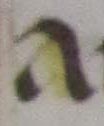 | Usage: And
the scribe has several upper case 'A's. | 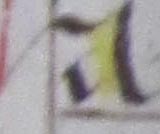 | Usage: And |
|
| D |
 | Usage: day
'd' is an oddly shaped graph with oblique down-stroke rather than a conventional loop. However, the scribe adds two angled strokes to form a triangular addition at the head. It may be the initiaion of the first stroke. |  | Usage: and |
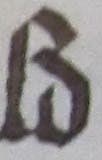 | Usage: world
where the preceding graph takes up the space at the head, the scribe does not bother to make any further addition. | 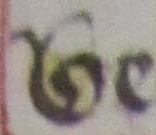 | Usage: Debet
the upper case 'D'. |
|
| G |
 | Usage: grete
on f8r, close to the beginning of the manuscript, nearly all the scribe's 'g's are tailed, with or without a hairline to join back to the upper lobe. |  | Usage: gold
further on in the manuscript, the scribe's graphs are a more conventional double compartment graph. |
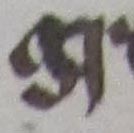 | Usage: gret
occasionally the lower compartment is not closed. | 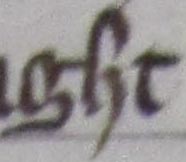 | Usage: nought |
|
| H |
 | Usage: hit
the tail descending from the limb may leave at an oblique angle as here. | 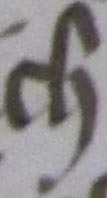 | Usage: Which
the limb and tail-stroke may also be gently curved as in this example. |
 | Usage: He
an example of upper case 'H' from later in the manuscript. | 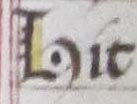 | Usage: Hit
a more elaborate version found at the beginning of the manuscript. |
|
| R |
 | Usage: reule
long 'r' is used throughout in all positions. However, the graph rarely extends below the line although it is still beneath the lower level of following graphs. |  | Usage: wher
'r' standing on the line. |
 | Usage: hors
'z'-shaped 'r' follows 'o' and round-bodied graphs. |  | Usage: writinges |
|
| S |
 | Usage: strecche
long 's' is used in initial and medial positions. |  | Usage: is
a form of 6-shaped 's' is used in final position. |
 | Usage: prologus
's' in final position, basically of the 6-shaped variety but with scooped head-stroke with long curved extension. This word is not at the end of a line. |  | Usage: So |
|
| W |
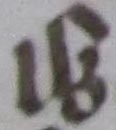 | Usage: werre
the middle limb extends well above the left limb. A separate stroke is added to the middle arm turning to the right and ending above the 'B'-shaped element which finishes the graph. | 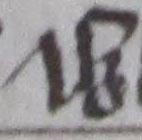 | Usage: wheche |
 | Usage: now |  | Usage: Which
'W' in first position in a line. It is exactly comparable to the lower case versions. |
|
| Y |
 | Usage: syde
'y' has a short straight tail and is always topped by a comma-type of stroke. |  | Usage: day |
 | Usage: þy |  | Usage: eny |
|
| Thorn |
 | Usage: þer
thorn is used frequently. The stem is always set at an angle. |  | Usage: haþ
thorn is always used for the ending in the present tense of verbs. |
 | Usage: þinges
thorn frequently replaces 'th' throughout. |  | Usage: lackeþ |
|
| Upper Case Letters |
 | Usage: Til | 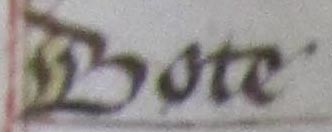 | Usage: Bote
an interesting and unusual form of upper case 'B'. |
 | Usage: I
an unusual upper case 'I' with three or four 'fins' to the left of the stem. |  | Usage: Or
|










































